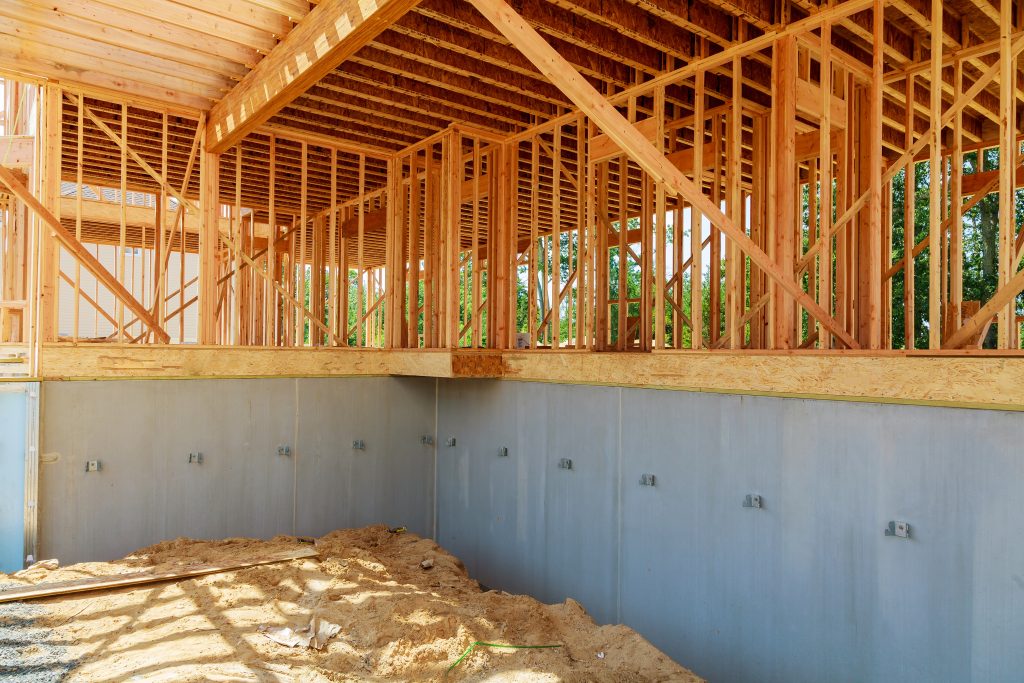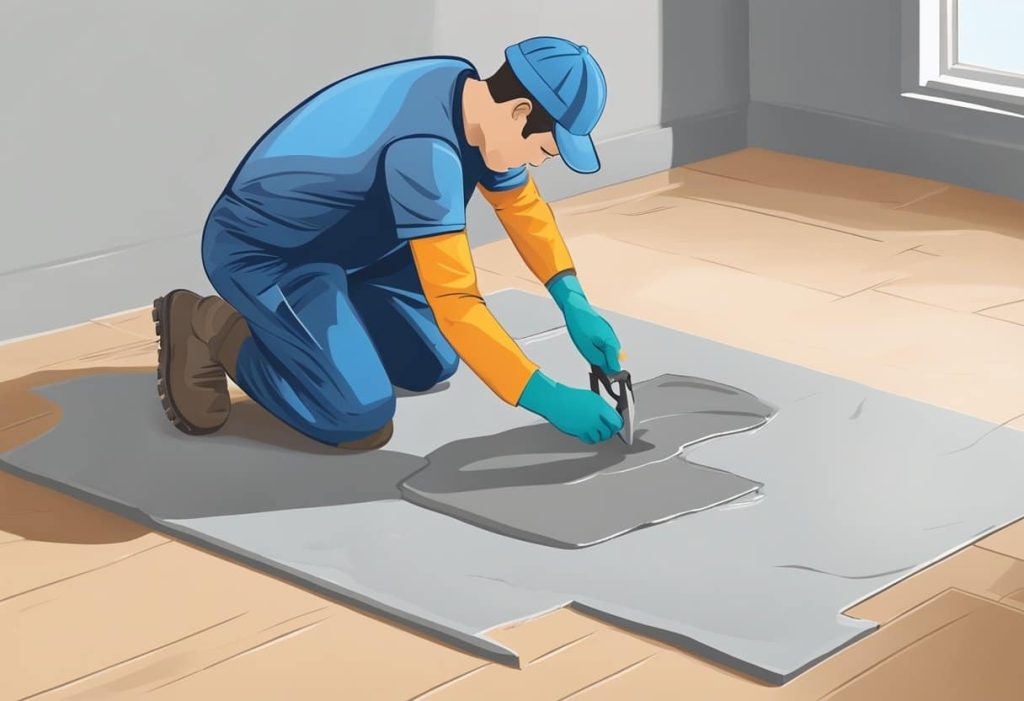Mold is a common problem that many homeowners face. Not only does it look unsightly, but it can also cause health issues if left untreated. Cleaning mold and sealing areas to prevent future growth can be a daunting task, but it is essential to maintain a healthy living environment.
To properly clean and seal mold, it is important to follow a set of steps that will ensure the effective removal of mold and prevent its return. These steps include:
By following these steps, homeowners can effectively tackle mold growth and maintain a healthy living environment for themselves and their loved ones.
Identifying the Source of Mold Growth
The initial step in the process of cleaning and sealing mold involves identifying the root cause of mold growth. This requires a thorough inspection of the affected area to determine the source of moisture that is facilitating the mold proliferation.
Mold can grow on any organic material as long as it has a source of moisture, making it a common problem in areas prone to dampness and humidity. The source of moisture could be anything from a leaking roof or pipe to poor ventilation or condensation.
Once the source of moisture has been identified, the next step is to eliminate it. This may involve fixing leaks, improving ventilation, or reducing humidity levels. It is essential to address the root cause of the mold growth to prevent it from coming back, even after the cleaning and sealing process.
Failure to address the source of moisture can result in the mold returning and spreading, causing further damage to the affected area. In some cases, identifying the source of moisture may require the services of a professional mold inspector or contractor. They can use specialized equipment such as moisture meters and thermal imaging cameras to assess the extent of the mold growth and determine the root cause.
A professional can also provide advice on the best course of action to take to prevent mold growth from reoccurring.
Eliminating Moisture and Fixing Leaks
Eliminating moisture and fixing leaks is crucial in preventing the growth and spread of mold in any environment. Mold thrives in damp and humid conditions, and fixing the source of moisture is the first step in cleaning and sealing it. If left untreated, moisture problems can lead to structural damage and health hazards, making it imperative to address them as soon as possible.
To eliminate moisture, the first step is to identify the source of the problem. This could be a leaky roof, a broken pipe, or poor ventilation. Once the problem is identified, it should be fixed immediately to prevent further damage. This could involve repairing or replacing damaged pipes, improving ventilation, or sealing cracks and gaps in the walls or ceiling.
After the source of moisture is eliminated, the affected area should be thoroughly cleaned and dried. This involves using a combination of cleaning solutions and equipment to remove the mold and any remaining moisture. Once the area is dry, it should be sealed to prevent moisture from seeping in again. This could involve using a waterproof sealant or installing a dehumidifier to regulate the humidity levels in the area. By taking these steps, you can effectively clean and seal mold and prevent it from returning.
| Leak Types | Possible Causes | Prevention Strategies |
| Roof leaks | Damaged shingles or flashing | Regular inspection and maintenance |
| Plumbing leaks | Broken pipes or faulty connections | Regular plumbing maintenance and inspections |
| Foundation leaks | Cracks or gaps in the foundation | Waterproofing and sealing foundation |
| Window leaks | Poor installation or damaged seals | Regular inspection and resealing as necessary |
| HVAC leaks | Clogged drain lines or faulty connections | Regular maintenance and inspections of HVAC system |
Eliminating moisture and fixing leaks is a crucial step in preventing mold growth and spread. Identifying the source of the problem, fixing it, and thoroughly cleaning and drying the affected area before sealing it are all important steps in the process. By following these steps and implementing prevention strategies such as regular maintenance and inspections, you can effectively prevent mold growth and keep your environment safe and healthy.
Gathering Necessary Cleaning Supplies and Protective Gear
To effectively prevent the spread of mold, it is essential to begin by gathering the necessary cleaning supplies and protective gear. The first step is to acquire a respirator mask, gloves, and goggles to protect oneself from inhaling mold spores and coming into contact with the cleaning chemicals. It is also important to wear old clothes that can be easily washed or disposed of after the cleaning process.
Next, it is crucial to gather the cleaning supplies needed to effectively remove the mold. This includes a scrub brush, a bucket, a sponge, a spray bottle, and a cleaning solution. The cleaning solution can be a mixture of bleach and water or a commercial mold cleaner. It is important to read the labels of the cleaning products to ensure they are safe to use on the affected surface.
Lastly, it is important to have proper ventilation during the cleaning process. Open windows and doors to allow fresh air to circulate and use fans to help dry the area after cleaning. It is also important to dispose of any contaminated materials, such as rags or sponges, in a sealed plastic bag to prevent the spread of mold spores.
By following these steps and using the necessary cleaning supplies and protective gear, one can effectively clean and seal mold to prevent its spread.
Cleaning Mold with Mold-Killing Cleaner
Using a mold-killing cleaner is an effective method for removing mold and preventing its spread. Mold-killing cleaners can be found at most home improvement stores and are specifically designed to remove mold. It is important to choose a cleaner that is safe for the surface you are cleaning and effective against the type of mold you are dealing with.
Before applying the cleaner, it is important to protect yourself with appropriate gear, such as gloves and a mask. This will prevent exposure to mold spores, which can cause respiratory problems and other health issues. Once you are properly protected, apply the cleaner to the affected area using a sponge or cloth. Be sure to follow the instructions on the cleaner carefully, as some may require dilution or multiple applications.
After applying the cleaner, allow it to sit for the recommended amount of time before rinsing it off with water. If any mold remains, repeat the cleaning process until the mold is completely removed.
It is important to note that cleaning mold does not eliminate the source of the problem, which may be caused by moisture or humidity. To prevent future mold growth, it is necessary to identify and address the underlying issue.
Sealing Areas to Prevent Future Mold Growth
One effective method for preventing future growth of mold involves creating a barrier between the affected area and sources of moisture. This can be achieved by sealing the area with a mold-resistant paint or sealer. These products are specifically designed to prevent the growth of mold and mildew by creating a barrier that prevents moisture from penetrating the surface.
Before applying the sealer, it is important to thoroughly clean the affected area to remove any existing mold. This can be done using a mold-killing cleaner and a scrub brush. Once the area is clean and dry, the sealer can be applied according to the manufacturer’s instructions. It is important to ensure that the sealer is applied evenly and thoroughly to all affected surfaces.
In addition to sealing the affected area, it is also important to address any underlying moisture issues. This may involve repairing leaks, improving ventilation, or installing a dehumidifier. By addressing the source of moisture, you can prevent future mold growth and ensure that your home remains healthy and safe.
With proper cleaning and sealing techniques, you can effectively eliminate mold and prevent it from returning in the future.
Frequently Asked Questions
What are some natural ways to clean and prevent mold growth?
Mold is a common problem in many households and can cause various health issues, such as respiratory problems or allergies. While there are several chemical products available to clean mold, natural remedies are an effective and eco-friendly way to prevent mold growth.
Vinegar, hydrogen peroxide, and tea tree oil are natural remedies that can clean mold effectively. Vinegar is a mild acid that can kill 82% of mold species, hydrogen peroxide is a strong oxidizer that can kill mold on contact, and tea tree oil has antifungal properties that can prevent mold growth.
Additionally, promoting proper ventilation, reducing humidity levels, and fixing any water leaks are some effective ways to prevent mold growth. By following these natural methods, you can keep your household mold-free without relying on harsh chemicals.
How long does it take for mold to grow back after cleaning?
As the adage goes, prevention is better than cure. In the case of mold growth, it is best to take preventive measures to avoid mold from recurring.
However, if mold has already developed, it is important to address the problem immediately. The length of time it takes for mold to grow back after cleaning depends on several factors, such as the severity of the mold infestation, the effectiveness of the cleaning method used, and the environmental conditions.
In some cases, mold can start to grow back within a few days if the source of the moisture that caused the mold has not been addressed. To prevent mold from regrowing, it is important to eliminate the source of moisture, improve ventilation, and maintain a clean and dry environment.
Regular inspections and maintenance can also help to prevent mold growth.
Can mold be completely removed or will it always come back?
Mold can be removed completely, but it depends on the extent of the mold growth and the efficacy of the cleaning process. If mold is only on the surface, it can be removed completely, but if it has penetrated deep into porous materials, such as drywall or insulation, it may be more difficult to remove entirely.
It is important to use proper cleaning techniques and equipment, such as HEPA vacuums and specialized cleaning solutions, to remove mold effectively. Additionally, it is important to address the underlying cause of mold growth, such as moisture or humidity issues, to prevent it from returning.
While it is possible for mold to come back after cleaning, taking proactive measures to prevent its growth can reduce the likelihood of it returning.
Can I paint over moldy areas instead of sealing them?
It is quite amusing to contemplate painting over moldy areas instead of properly sealing them. It is akin to putting a band-aid on a broken bone.
Mold is a persistent problem that requires a thorough approach to remediation. Painting over mold is not a viable solution as it will not only fail to address the underlying issue, but it could also exacerbate it by trapping moisture and allowing mold to continue to grow.
The only effective way to deal with mold is to remove it completely and then seal the affected area to prevent its return. This involves following a series of detailed steps, including identifying the source of moisture, using appropriate protective gear, and applying suitable cleaning agents.
Once the cleaning process is complete, the area should be thoroughly dried before sealing it with an appropriate sealant. It is important to note that mold remediation is not a one-time solution, and regular inspections and maintenance are necessary to prevent its recurrence.
Are there any health risks associated with cleaning mold on my own?
Cleaning mold on your own can pose certain health risks. Mold can release spores and mycotoxins that can trigger allergic reactions, respiratory problems, and other health issues, especially for vulnerable populations such as infants, elderly individuals, and people with compromised immune systems.
Additionally, cleaning mold improperly can spread the spores and mycotoxins, leading to a larger contamination. It is important to take appropriate precautions when cleaning mold, such as wearing protective gear like gloves and a mask, using proper cleaning solutions, and ensuring proper ventilation.
If the mold contamination is extensive, it is recommended to seek professional assistance.
Conclusion
Mold growth can be an alarming issue, and it is important to take immediate action to prevent further damage. The process of cleaning and sealing mold can be a daunting task, but by following the steps outlined in this article, you can ensure that your home or workspace remains safe and healthy for all.
Identifying the source of mold growth is crucial to prevent recurring incidents. Eliminating moisture and fixing leaks must be done before cleaning the mold.
To clean the mold, you need to gather necessary cleaning supplies and protective gear. It is essential to use a mold-killing cleaner to ensure that the mold is thoroughly removed.
Sealing areas to prevent future mold growth is the final step in the process.
In conclusion, cleaning and sealing mold may seem like a difficult task, but it is necessary to ensure the safety and well-being of those around you. By following the steps outlined in this article, you can rid your environment of mold and prevent its recurrence.
Remember, mold can be a serious issue, and it is important to take immediate action to prevent further damage. So, take the necessary steps and ensure a healthy and safe environment for all.

 CALL US NOW
CALL US NOW



